Enjoy Amazing Gaming Visuals With The Best Gaming Monitors
Whether you're a skilled PC gamer or a weekend warrior, you'll need a gaming computer with a high-end graphics card to get the most out of the latest first-person shooter, racing, and sports games. But it's the monitor that can display the action without blurred images, tearing, flickering, or other motion artifacts that will increase your odds of winning.
Various brands and manufacturers of high-definition gaming monitors are on the market, making it difficult to choose the right one. So, to make your decision easier, we made a list of the top gaming monitors of 2023.
Comparing The Top Gaming Monitors Of 2023 In Detail
Dell LED Gaming Monitor: Best Overall
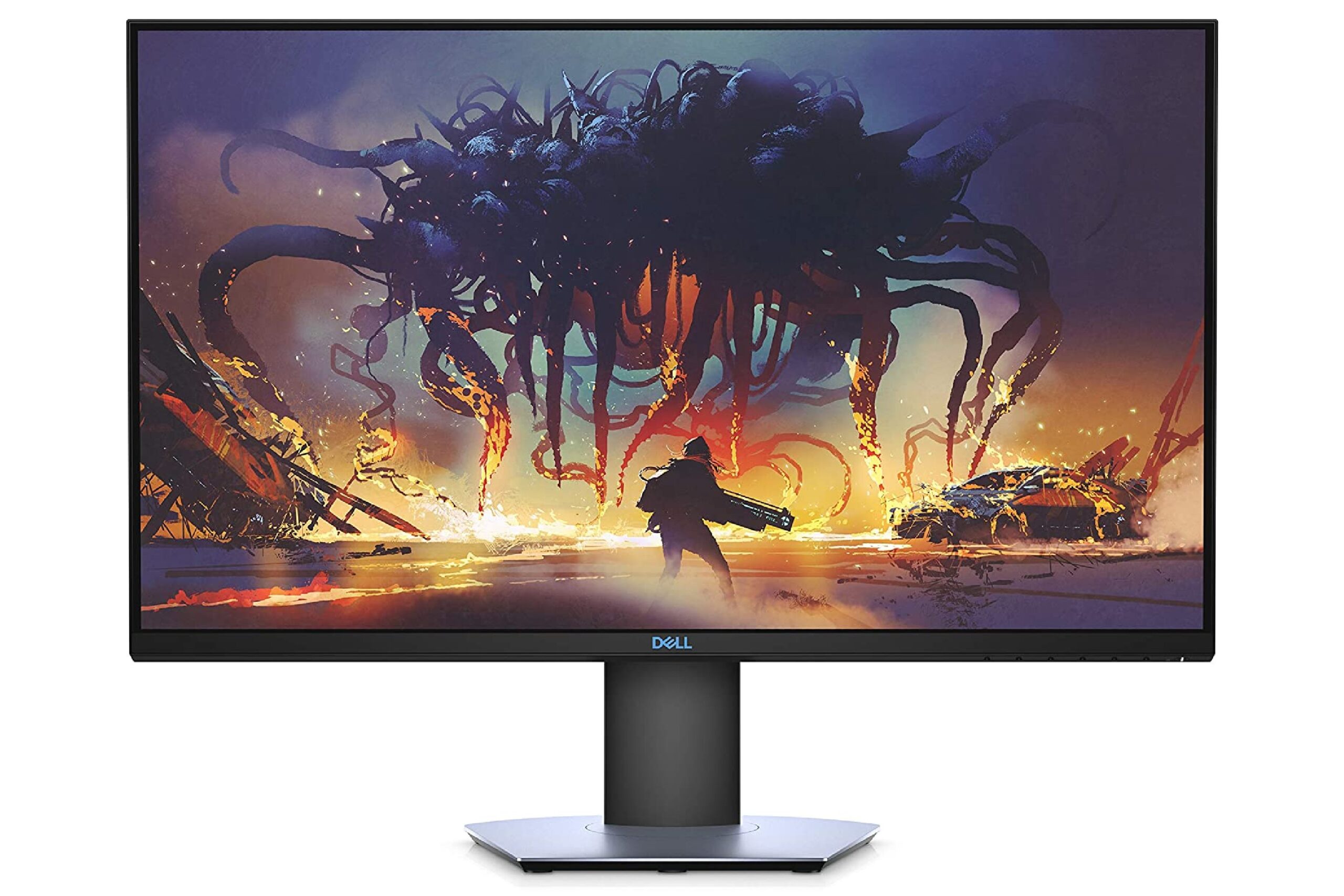
The Dell LED Gaming Monitor features an excellent display and exceptional image quality. It's your best bet if you're seeking a monitor with extensive gaming-related features.
It boasts excellent gaming capabilities such as free-sync variable refresh rate technology support, a fast response time that leaves no blur and a very low input lag to improve the gaming experience. Plus, it can become sufficiently bright to battle glare and its dark room performance is good because of its high native contrast ratio and black uniformity.
Better still, it boasts great out-of-the-box color accuracy and outstanding ergonomics, allowing you to position it anywhere you see fit. Further, it has an elegant appearance suitable for any workplace or gaming environment.
The built-in stand with minimal wobble supports the monitor. The monitor's ergonomics are remarkable and its height, swivel, tilt and even rotation can be easily adjusted. The well-balanced sturdy stand enables you to place it easily on your desk.
All inputs on the back of the monitor face downwards so that they do not protrude when the monitor is VESA-mounted. This product is the best on our list because of its crisp QHD resolution, no-tear graphics with a rapid refresh and sturdy construction, making it an excellent pick for gamers.
SAMSUNG Odyssey G9 Gaming Monitor: Ultrawide Curved Display
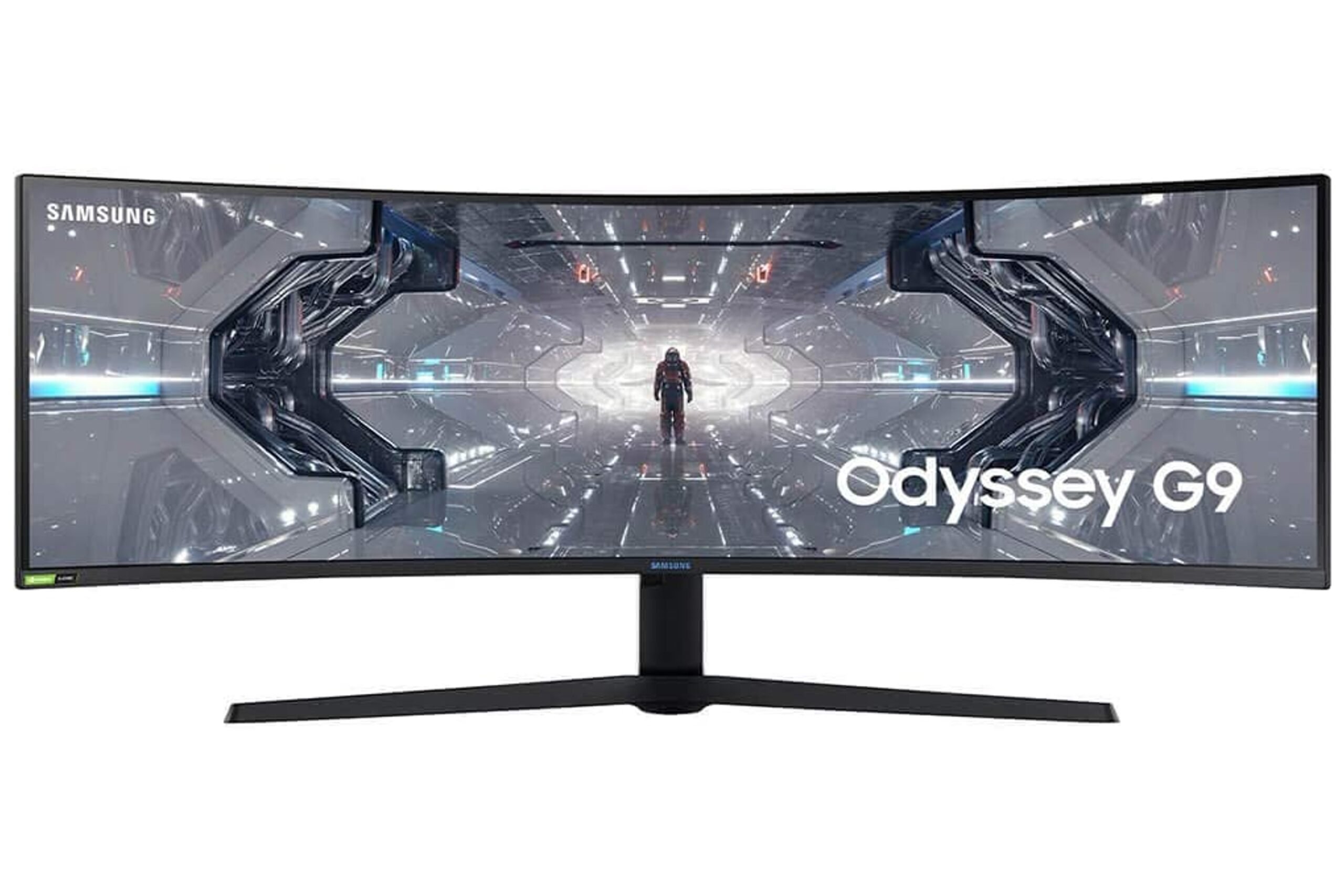
With best-in-class speed, picture quality and a 1000R curve, the SAMSUNG Odyssey G9 Gaming Monitor provides you with a distinctive gaming experience. Its brightness, HDR, color accuracy and 240 Hz refresh rate create an experience more immersive than most.
This monitor boasts a VA panel with a mega-wide QHD resolution of 5120 x 1440, which is the equivalent of placing two 27-inch 1440p monitors side-by-side to achieve a 32:9 aspect ratio. Its pixel density delivers the optimal balance between performance and cost.
Even better, the panel's native 10-bit color depth provides perfect smooth picture movements. The innovative QLED technology delivers pixel-perfect picture quality in every frame, from the darkest blacks to the brightest colors.
Also, the G9 incorporates quantum dot technology, which creates more vibrant colors with 125% greater color space than sRGB. It is well-equipped to anchor an excellent gaming system.
Plus, it includes infinite core lighting that allows you to match the Odyssey's core color to your monitor and the rest of your gaming equipment. The ultrawide curved panel's aspect ratio of 32:9 keeps games active even when you need pauses.
Sceptre Curved Gaming Monitor: Crisp Visuals
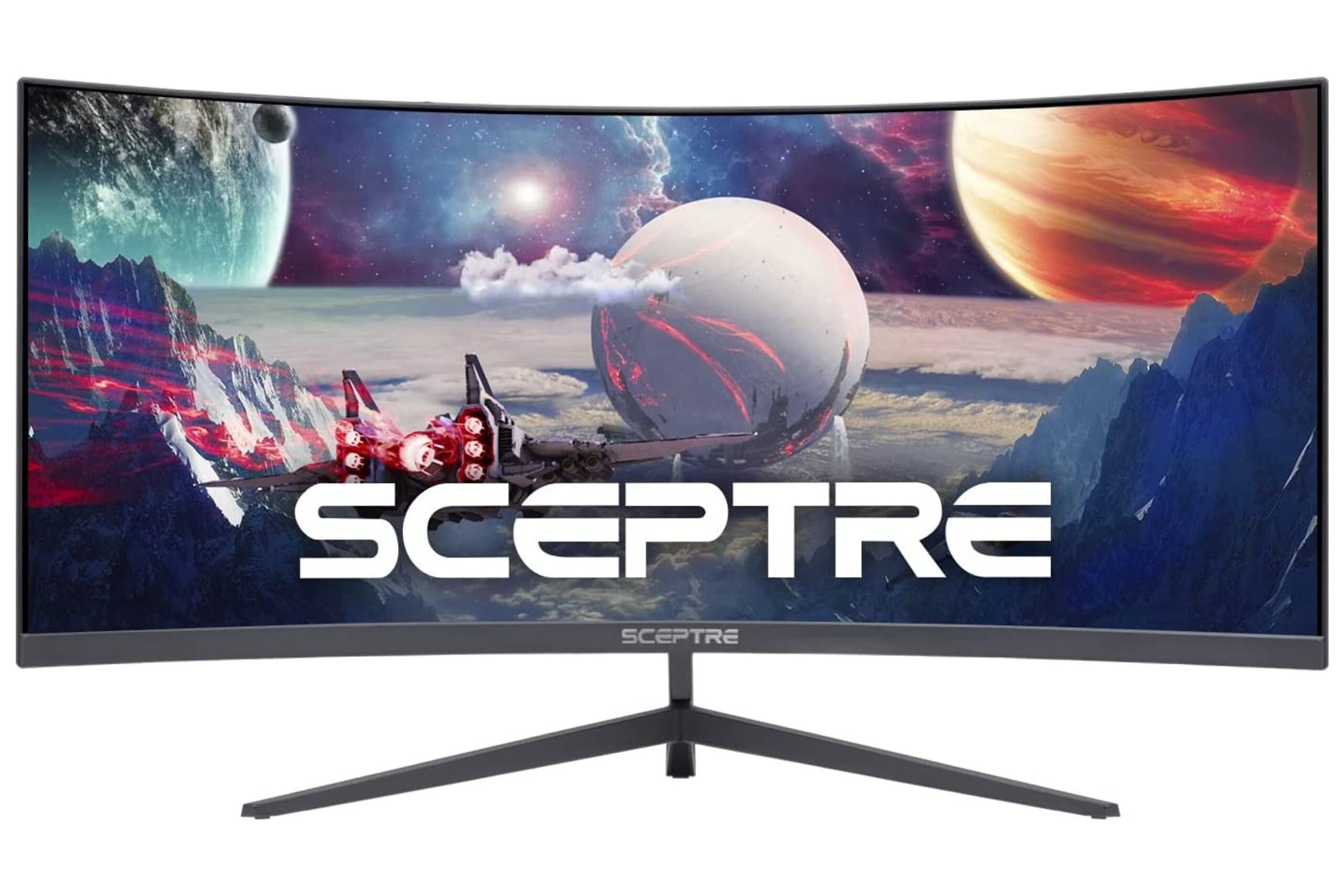
The Sceptre Curved Gaming Monitor is among the best gaming monitors if you're looking for a budget monitor that offers good gaming performance and crisp visual quality that can also be used for work-related tasks.
With a sleek design, a 30-inch ultrawide curved Vertical Aligned screen and accurate colors, this monitor is ideal for casual movie viewing and playing games. It delivers a high contrast ratio for deep blacks, a high resolution for increased immersion and AMD FreeSync up to 200 hertz for smooth performance.
It has a blue light shift that reduces blue illumination, so you can watch, read, or play games without hurting your eyes. The built-in speakers are ideally suited for work and gaming environments, delivering strong and smooth music while conserving desk space.
Its multiple digital connections give a refresh rate of up to 200 hertz, providing superior visibility. The High Dynamic Range (HDR) boosts dynamic contrast ratio, lighting color up to 50% brighter than SDR and exhibiting dark colors that are remarkably distinct.
It also features picture-in-picture, enabling you to multitask and view anything you want over a secondary source. Its colors fade and brighten instantaneously with a 1ms response time, reducing ghosting and assembling exact imagery during action scenes and gaming.
Viotek GFV22CB Gaming Monitor: Elegant Design
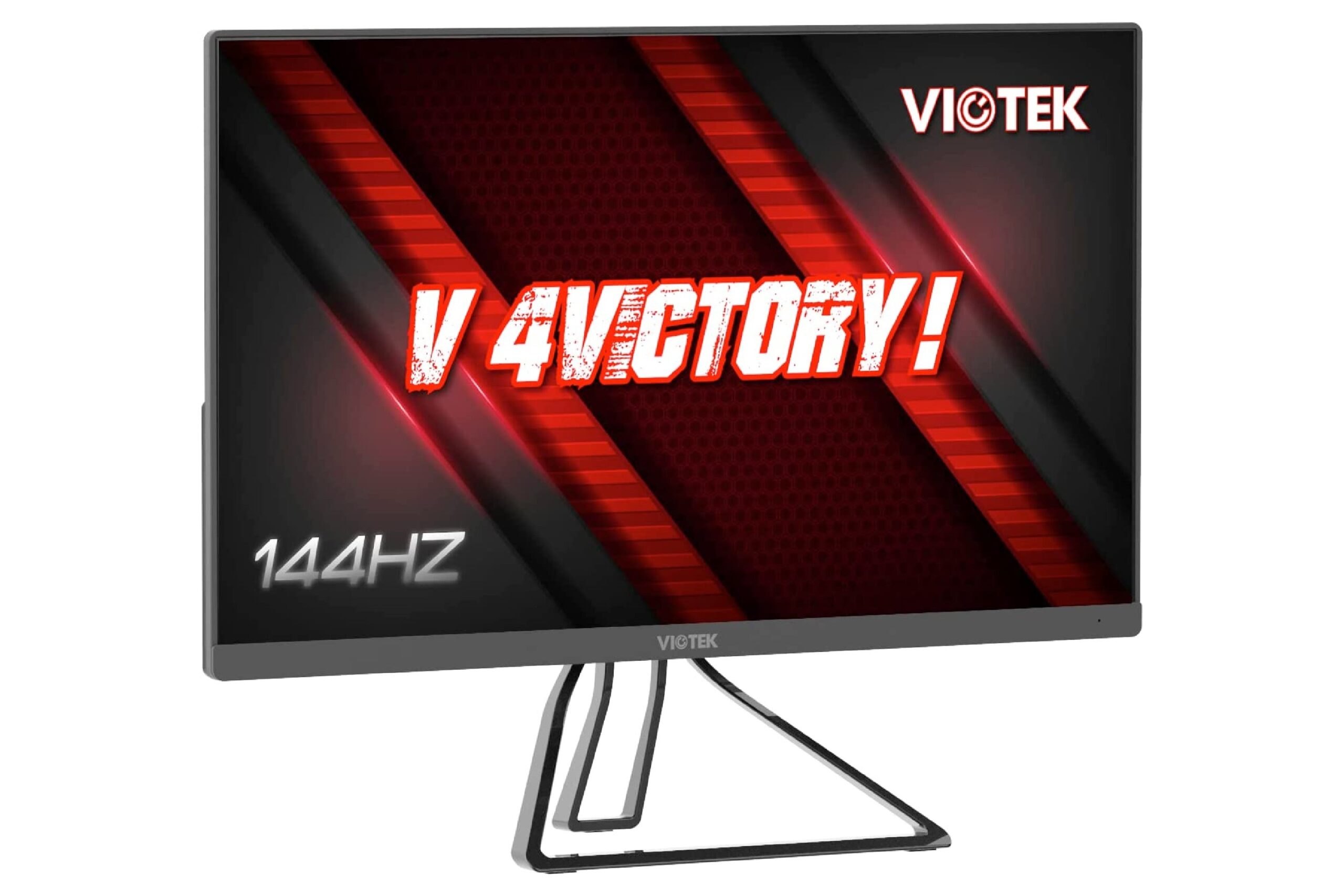
The elegant design of the Viotek GFV22CB Gaming Monitor saves desk space. Although it's only 22 inches, this screen suits both professional and personal display requirements.
This monitor's 144-hertz rate enables it to display the sharpest graphics. It has AMD FreeSync and G-sync features, ensuring it meets your gaming requirements. Rich whites and blacks make it simple to detect action before it's too late. Its built-in stand is in a stable triangle shape that helps keep the screen balanced and provides perfect vision.
Additionally, the Viotek offers greater resolutions and refresh rates than most monitors. Also, the included VESA mount allows you to attach it to the wall and use it as a secondary screen or gaming console monitor.
This gaming monitor features high-performance connection ports that allow you to connect it to your required devices. You may also use it as a secondary monitor for your laptop or as a monitor for your gaming console by connecting the DisplayPort connector included with an HDMI cable to your PS4.
LG UltraGear Gaming Monitor: Outstanding Response Time
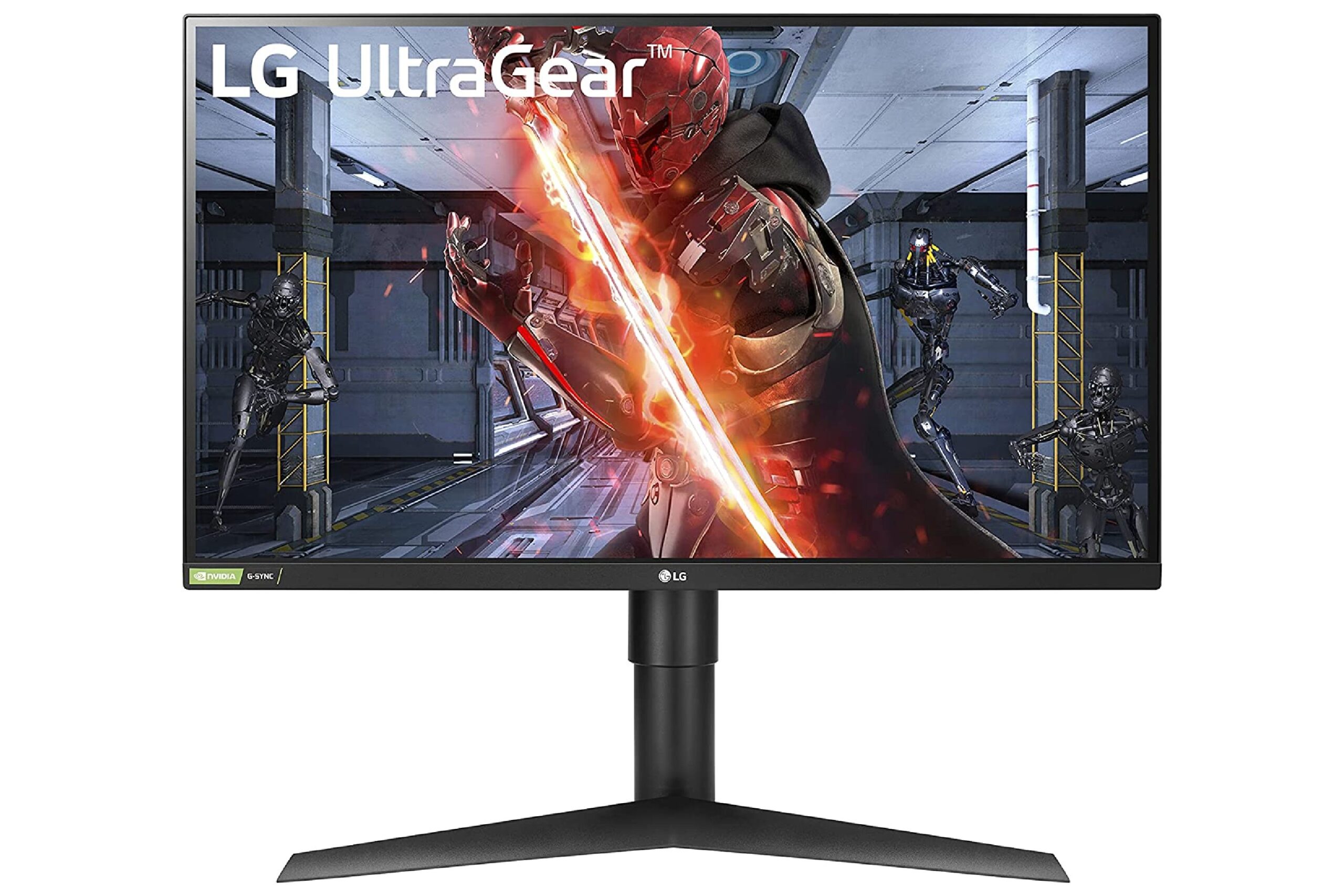
The LG UltraGear Gaming Monitor comes with a 27-inch, in-plane switching screen that provides a great viewing experience. It provides a fantastic gaming experience with exceptionally little input lag, powerful gaming capabilities and top notch response speed.
The UltraGear's fast refresh rate eliminates screen tearing and reduces stuttering in high-resolution, fast-paced games for a seamless gaming experience. It also boasts effective reflection management, wide viewing angles and excellent peak brightness so that glare won't be a problem.
Its low input lag and exceptional response time result in crisp animation with minimal blurring behind fast-moving objects.
Better yet, it has a supporting stand that keeps the screen stable with a minimum wobble. Plus, its superior IPS display gives superb horizontal viewing angles, so you will not lose image quality when viewing from the side in case you share your screen with a co-player or friend.
Finding A Quality Gaming Monitor: A Buyer's Guide
The best gaming monitors can definitely improve your overall experience and performance. They allow you to keep track of everything on your screen if you select durable and supportive gear while playing games.
Screen quality, screen size, and other features are some of the factors that can give you a competitive edge. We evaluated market trends to identify the most effective and highest-quality gaming displays to help you make a more informed decision. Without further ado, let's examine the factors you must consider.
How To Pick The Right Gaming Monitor
Panel Type
TN (twisted nematic). TN panels are budget-friendly options that have the highest refresh rates and lowest response times. The refresh rate is the amount of times the monitor can show a brand new image per second. Although refresh rate is normally not very noticeable when carrying out everyday computing tasks, it is of crucial importance when playing premium-level, fast paced games with multiple players. Similarly, response time is the time it takes for the monitor to switch colors. A low response time will lessen the chance of screen blurring or tearing, and give gamers the edge in a situation where every millisecond counts.
The downside to TN monitors is they continue to have the least pleasing color reproduction and smaller view angles, causing them to look blurry from the sides.
VA (vertical alignment). A vertical alignment is a versatile panel type. It offers greater contrast, color quality, response time, and viewing angles than TN. Although they have a significant chance of encountering motion blur, improving technology has eliminated this problem to a considerable extent.
IPS (in-plane switching). IPS is considered the finest technology in terms of color quality and viewing angles. Its refresh rates and response times are similar to VA's, making it slower than TN but still enough for most applications. The biggest benefit of IPS technology is its color presentation, which is infinitely superior to that of the other two LCD types, despite IPS' reputation for inadequate contrast and dark levels.
Screen Resolution And Size
While monitor sizes range from 22 inches to over 50 inches, the most popular or common gaming monitors are between 25 and 35 inches large.
In the last six years, resolutions have stabilized at 2560 x 1440 (QHD or 2K), 1920 x 1080 (full HD 1080p), and 3840 x 2160 (4K or UHD). When looking at screen size, the aspect ratio should also be considered. "Regular" monitors have a 16:9 aspect ratio, but ultrawide monitors exist in 21:9 and 32:9 formats.
To balance size and resolution, you should look for a pixel density of 100 to 120 pixels per inch. This will produce the most distinct and crisp images. So, 25-inch or 27-inch monitors are optimal for 1080p, 27-inch to 35-inch for 1440p, and at least 32 inches for 4K.
Generally, 1080p 25- to 27-inch monitors are great. Larger monitors let you see more comfortably from a greater distance, so you don't have to sit as close and images look more stunning on larger displays.
Despite technological advancements, larger panels have lower refresh rates, slower response times, and an increased likelihood of ghosting (when a trail of pixels appears behind a moving object like a blur).
Refresh Rate
A monitor's refresh rate is measured in Hertz (Hz). This indicates how many times per second the monitor will refresh the screen. 60 Hertz is considered the minimum acceptable refresh rate for gaming, but higher numbers are recommended.
Curved Or Flat Screen
Most gaming monitors are flat. They function well with all gaming genres and styles and are the industry standard. But in recent years, curved panels have gained popularity.
Curved monitors provide the much-desired "immersion" effect by better fitting the natural depth perception of the human eye. It depends on personal preferences, but you should try a curved monitor before selecting it. The curve's depth is indicated by a number followed by an R, which stands for radius: the lower the number, the more "aggressive" the curve and the closer the edges.
Since curved monitors are nearly always ultrawide 21:9 displays, they offer a wider viewing area than their flat counterparts. It's beneficial in any game or program, allowing increased viewing per frame. A smaller field of view (FOV) causes screen movement to see beyond the corners of the frame.
An ultrawide curved monitor may be the perfect option if you are particularly interested in simulation games, such as racing and flight sims. It will provide a viewing experience that is more realistic and interesting than a flat panel.
People Also Asked
What size screen should I go for?
You should choose a screen size that meets your needs, available space, and budget. The most prevalent sizes for everyday use range from 21 to 24 inches in length. Screens larger than 25 inches typically include a greater resolution and other advanced features. Monitors with a greater screen size might be significantly more expensive.
Should I get an HDR monitor?
HDR stands for High Dynamic Range, monitors that support an increased range of color. HDR monitors enable the player to experience more color, contrast, depth and detail overall. This is a good option because there are a rising number of games and applications that include HDR compatibility. However, it can be a more pricey option.
Should I choose a FreeSync or G-Sync monitor?
FreeSync monitors are cheaper on average. Originally, they were only compatible with AMD GPUs, while the same was true for NVIDIA GPUs and G-Sync monitors. But currently, you can find G-Sync compatible FreeSync monitors if you want to save money.
Which aspect ratio should I choose?
Today's movies and video games are best appreciated in wide-screen format, with an aspect ratio of 16:9 or above. These cinematic scenes will appear stunted, with black bars on the top and bottom in 4:3. There are various minute differences between each ratio. Still, the choice between them depends solely on personal preference.
Yet, ultra-wide aspect ratios such as 21:9 and 32:9, and their derivatives, are optimal but cost slightly more. These will deliver a significantly more encompassing and immersive experience.